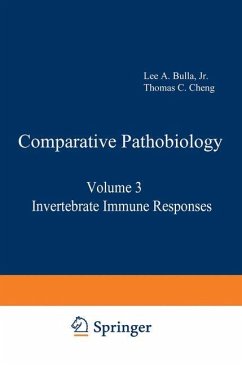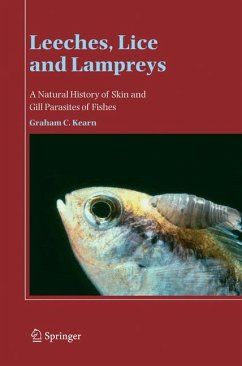
Immunity in Invertebrates
Cells, Molecules, and Defense Reactions
Mitarbeit: Arcier, J.M.; Boemare, N.; Bonami, J.R.; Vivares, C.P.; Herausgegeben von Brehelin, M.
Versandkostenfrei!
Versandfertig in 1-2 Wochen
115,99 €
inkl. MwSt.

PAYBACK Punkte
58 °P sammeln!
In 1822, E. Metchnikoff discovered phagocytosis while he was studying starfish larvae. The following year, while carrying out experiments on Daphnia (Crustacea), the same author demonstrated the scale of the phe nomen in the defence of the organism. Finally, between 1891 and 1910, L. Cuenot was the first to reveal lymphoid organs, in crustaceans and in sects; some of these organs playa role in both phagocytosis and inhaema topoieses. With rare exceptions, research into defence reactions in invertebrates was meagre in quantity and sometimes meagre in quality from then until the mid-1960's. The ...
In 1822, E. Metchnikoff discovered phagocytosis while he was studying starfish larvae. The following year, while carrying out experiments on Daphnia (Crustacea), the same author demonstrated the scale of the phe nomen in the defence of the organism. Finally, between 1891 and 1910, L. Cuenot was the first to reveal lymphoid organs, in crustaceans and in sects; some of these organs playa role in both phagocytosis and inhaema topoieses. With rare exceptions, research into defence reactions in invertebrates was meagre in quantity and sometimes meagre in quality from then until the mid-1960's. The renewal of interest in the subject over the past few years is now well established, and invertebrates are no longer the poor re lation of immunity research. Three of the many reasons which have been found to account for this renewal of interest can be stressed. One concerns the preoccupations of fundamental research and the other two are associated with applied re search. Firstly, there is hope of fmding defence mechanisms in inverte brates that are new (or not yet known) or of using phylogenesis to fmd explanations for phenomena in vertebrates which are still unaccounted for.














